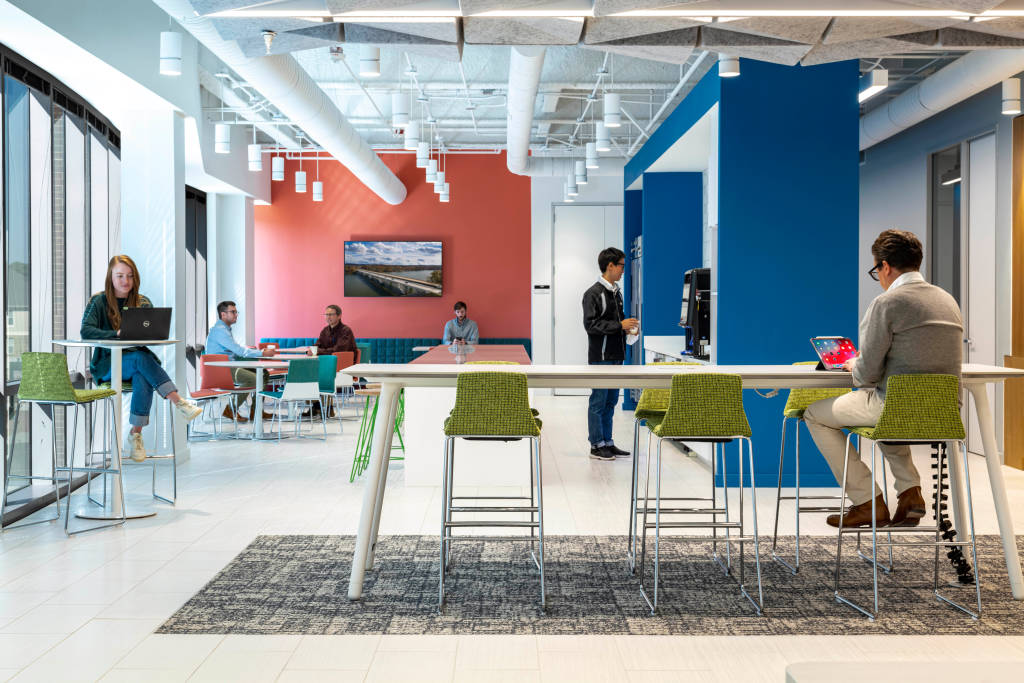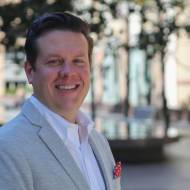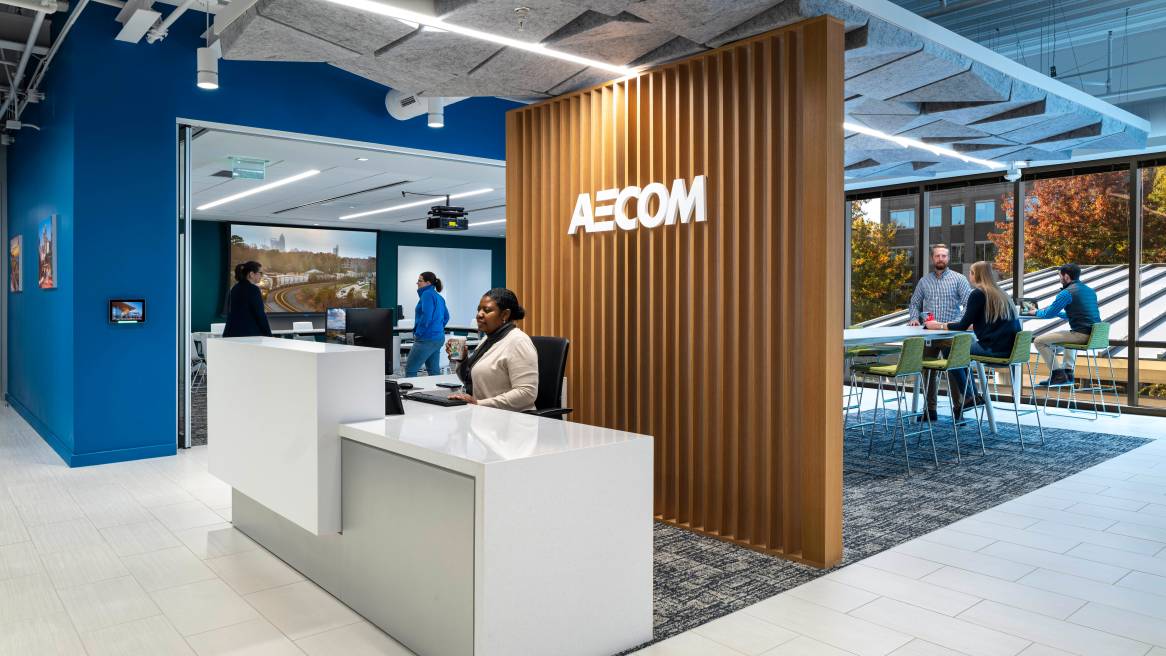The Office Is the New Amenity
AECOM Senior Associate Design Director Matt Rebbe talks about how the office of old won’t cut it – new spaces are needed to make a human connection
The changing face of work and the need to attract and retain talent is creating a paradigm shift in the world of workplace culture and building and office design. AECOM design director Matt Rebbe recently sat down with 360 to talk about what inspires him in designing the next generation of hybrid workplace design and why a failure to adapt will put companies at a competitive disadvantage in attracting the best people.
360: The world of work is changing and more needs to be done to earn people’s commute. How do you believe the workplace impacts a person’s work experience?
MR: As human beings, we need experience in our lives. It’s the experience that you’re trying to create that plays back to an emotion; to a human need. Essentially, the workplace of today has to support your daily life and experiences in many ways. The workplace is meaningful in that it can give someone a sense of who they are or what they want to be. The idea that the workplace is not just a place where we perform functions, but where we live life and socialize and make connections is fundamental to office design. If the office is just this place you go to and trudge through the day and go home, that’s not going to be a happy place for a lot of people. The workplace needs to start thinking about the bigger picture change to adapt to what someone’s experience in a day might be there.
360: How has the importance of the workplace changed when it comes to attracting employees?
MR: I think people are far more educated in what they want out of their day. They know what it’s like to be stuck at home all day and not be able to leave. What that experience has done, I think, is given people the opportunity to question what really makes the grass greener on the other side.
For example, “Employer A” has sit-to-stand workstations and lounge-style spaces where a person can be mobile during the day. Employees can choose where they want to work and the spaces they want to work in. Whereas, “Employer B” doesn’t have those things – it’s just a cubicle farm and you come to work in one place all day, and then you go home. It’s pretty clear which employer a person is going to want to work for. Companies need to recognize that even small space benefits and personal wellness features matter. The idea of the workplace being an extension of a company’s overall amenities is really important because it can not only help attract people but also retain them.
With all things being equal, if I’m going to get paid the same amount of money and basically do the same type of work, the physical space where those things are happening and all of the benefits that come with that space can be a powerful tool for attraction.
360: How has what we’ve learned working from home reshaped the idea of the office?
MR: We all enjoyed the maximum flexibility and amount of user choice that working from home provided and for many of us it is now intrinsic to our daily life. What needs to happen is that workplaces, employers, and HR groups need to come together and recognize that the one-size-fits-all notion doesn’t really work for everyone. The pandemic work experience forced people to make accommodations when it came to working around other family members and different distractions; determining when and where to make a one-on-one call; establishing a suitable background for group and client calls. The pandemic work experience allowed us to work more efficiently and was a direct response to the environment around us, and we didn’t have a choice. But as people return to the office, employees still expect to have flexibility and employers need to make sure people have choices. People want to craft where, when and how they want to work. A flexible office better supports the types of work we need to do.
360: Do you have a specific example of how AECOM’s workspaces deliver on the company’s philosophies about the future of work?
MR: To align our physical spaces with our global future of work thinking. What we quickly realized is that we needed our workplaces to be more flexible, purpose driven, and far more agile, to allow users the ability to innovate and come together in new ways. In Raleigh, N.C., for instance, we took a lot of what was traditionally single or compartmentalized spaces and turned them into big community-type spaces by designing private spaces to have operable walls that open up; fully transparent glass that welcomes people into larger social areas, and these areas serve as client and community-facing spaces as well. Spaces are now flexible, allowing us to come together in bigger groups when we need to, but at the same time support smaller initiatives, teams and functions throughout the day. We’re seeing those people who have come back really like the idea of having flexibility in the space.
It’s really kind of this central hub that is the crossroads of everybody coming together in a day and it allows for a lot of those happenstance conversations.
It’s also an opportunity to work in a meaningful way – it’s full of daylight and has great views. We’ve really championed pushing views to the people, not pushing views to the conference rooms.

A staff space inside AECOM’s revamped Raleigh facility allows for flexibility and supports a variety of work modes.
360: What do you think is the value of the office moving forward?
MR: I think that part of the success of what we do in the world of work is the social connection that comes from it – the ability to be together as a team, the ability to come, and think, and be productive – to share the highs and lows as a collective work community.
Obviously, there are people who may not need to come to a physical office to do what they do, and I don’t discount that at all. But for most of the working world, people need to be around each other to be better, quite frankly.
We’re better together because we bounce ideas off of each other much faster, much more quickly as a collective whole. So I think this idea that the office is gone is really just nonsense.
360: Research shows people prefer to work at home, but we also know that’s not where people always do their best work. What’s your best advice for companies looking to change how they approach the office?
MR: I would say they need to start listening to themselves and listening to their business to understand its needs and what’s going to be most beneficial going forward. And within that, you need to listen to the people. If people are telling you they still want to work from home a few days a week, that they need flexibility, your space needs to respond to that. You need to listen and think about that because if you don’t, there are organizations that are. People will start to look elsewhere.

Matt Rebbe is a licensed architect and a design director for AECOM, an infrastructure consulting firm. Rebbe has more than 20 years of experience creating personalized user-focused design concepts and continues to find creative solutions through design exploration.


